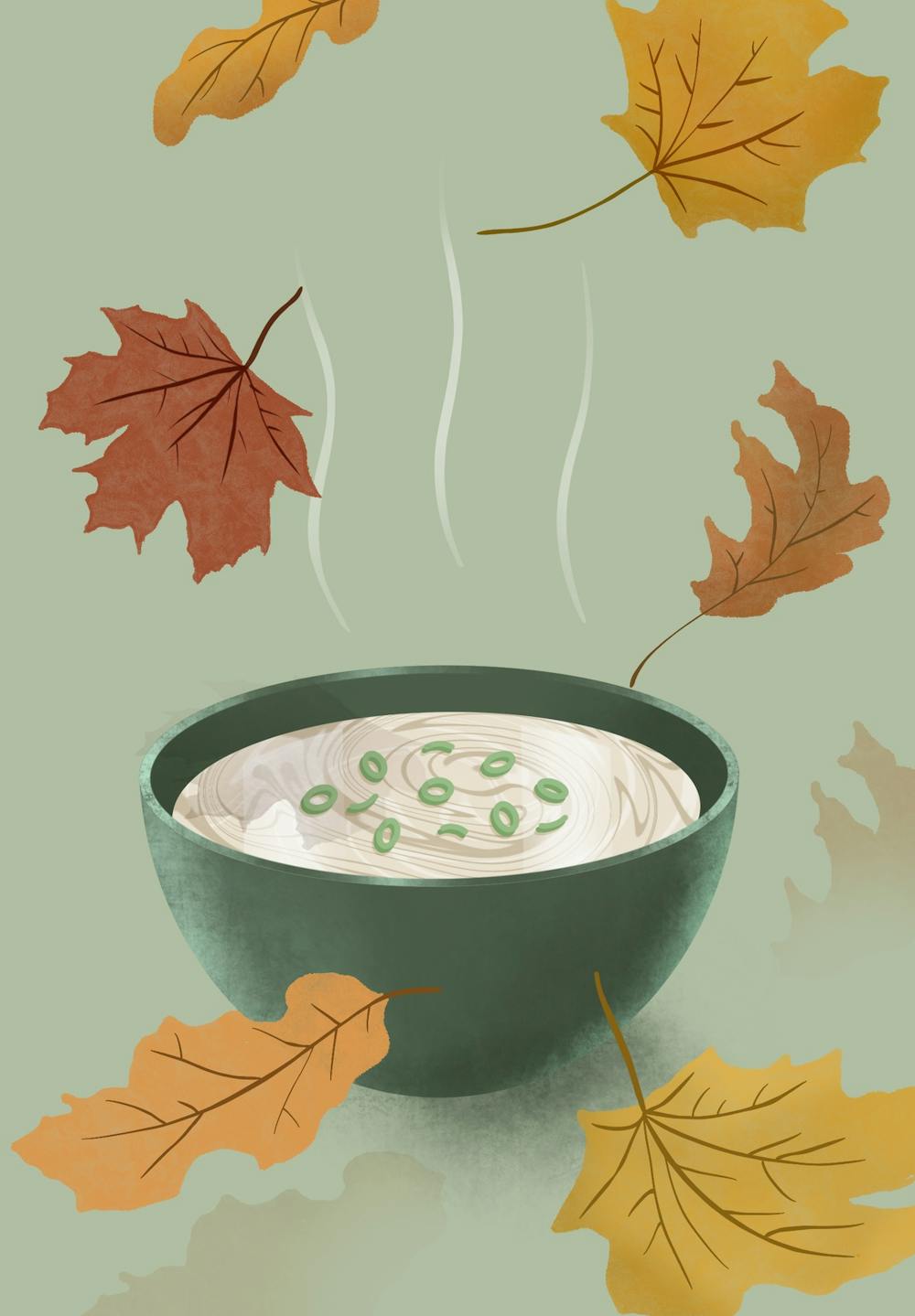As fall approaches us here in Charlottesville, the air becomes crisp and cool, and we reach for our sweaters and sweatshirts to combat this cold. As we welcome this chilled autumn weather, here is a great Korean recipe to warm you up for the remainder of the season. This traditional rice porridge dish, also known as juk (죽), originates from Korea and has many different variations existing in other countries. China has congee, jok in Thailand and lugaw in the Philippines — all of which are variations of rice porridge and are very similar.
This dish has a special place in my heart because it was made by my mother for me when I was sick at home. When my mom would make this dish, she would usually finely mince up whatever vegetables she had on hand such as carrots, mushrooms, cucumbers or white onions.This dish’s comforting qualities of gentle seasoning and ingredients, paired with its soft and warm texture are perfect for getting over a cold or to warm your body bite by bite.
Prep time: 5 minutes
Cook time: 25-30 minutes
Yields: About 3 bowls
Ingredients:
- 1 cup of white sticky rice
- 2 cups of water
- ½ pound of ground beef (or whatever meat of choice or meat/protein alternative — meat is not necessary for this dish. It is just an option and how I personally make it.)
- 1 tbsp oyster sauce
- Handful of mushrooms
- Scallions
- 1 tbsp of soy sauce
- 1 tsp of sesame oil
- 1 egg
Instructions:
- Take your cooked rice — I used white sticky rice — and boil it in water.
- In a separate pan, saute about a half a pound of ground beef and season with a little bit of oyster sauce for about five minutes. Skip this step if you are foregoing a meat option.
- Add your mushrooms into the pan and stir fry for three minutes on medium-low heat.
- Take this mixture and add it into your boiling rice.
- You will want to keep boiling until the rice has absorbed most of the water and has gained mass.
- While you are doing this, you will also want to start prepping your eggs. To get that perfectly gooey consistency for the egg yolk, place your eggs in boiling water for six to seven minutes. Make sure they are completely immersed in the water. I use a netted strainer to carefully place the eggs in the water so that their fragile shells don’t crack.
- While your eggs are boiling, prepare a bowl of ice water to put your eggs in after they are boiled. This ensures that your eggs stop cooking, allowing for the egg yolk to remain gooey.
- After a good three minutes in the ice bath, your eggs are ready to be peeled. I have found that peeling them under running water in the sink is very helpful.
- Add your now boiled rice into a bowl, where you will add soy sauce and sesame oil to taste.
- For presentation, cut your egg in half to reveal the yolk, which adds a pop of color to your bowl.
- Add a generous amount of cut up scallions.
- Lastly, sprinkle on your desired amount of sesame seeds as a final touch.
With the juk, I also like to pair it with a small bowl of kimchi. Kimchi (김치) is a traditional Korean side dish of spicy fermented cabbage — or sometimes cucumber or radish — which is mixed in with spring onions, a generous amount of garlic, chilli pepper, fish sauce and other side ingredients. This spicy and very tart dish pairs well with the mildness of the juk. Also, what is a Korean meal without kimchi?
If you want to opt out of the very intense flavors of kimchi, you can always pair your juk with Korean cucumber salad (오이무침), another traditional side dish made by tossing sliced cucumbers with sugar, salt, soy sauce, chili powder, sesame seeds, scallions and garlic. While this dish has a similar taste to kimchi, it is not sour since it is not fermented and spice can be regulated with the amount of chili pepper you choose to put in.
This dish brings back nostalgia of my mother’s cooking while also bringing a warm comfort to my body as we approach cooler weather. Juk is both delicious and a very simple and easy recipe, even for a busy college student. Additionally, this dish is known to be made with leftover cooked rice, establishing the recipe’s very casual and easy nature.







